Surface Design Show Highlights 2023
Now returning for its second post-pandemic showing it feels like the Surface Design Show never stopped. Between 7-9th February the hallowed hall of Islington Business Design Centre played host to surface materials and manufacturers of all kinds. 175 exhibitors showcased their wares to an audience of some 6000 visitors, predominantly made up of architects and designers. Operating under the Shaping Communities banner, the event looked to open a dialogue amongst brands and specifiers within the industry to consider how to build stronger relationships between people and places.
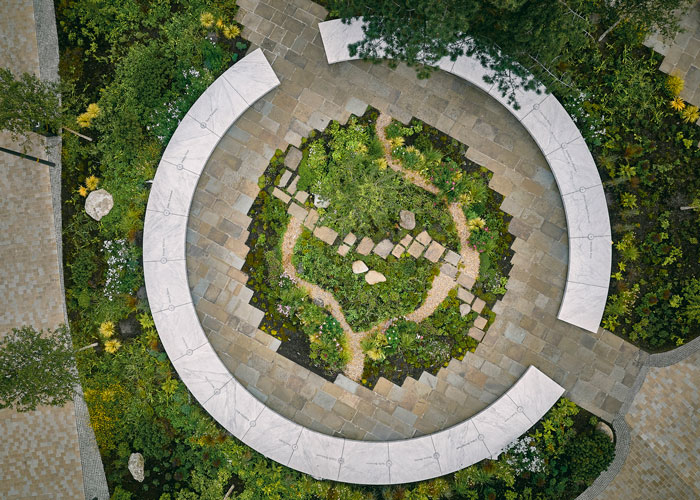
BCA Landscape – Glade of light – Credit Glenn Maguire
With 130 entries from 12 different countries, the Surface Design Show Awards once again pushed the level of quality to new levels in terms of material-driven architectural and interior design. So much so in fact, that this year the judges awarded joint Supreme Winners for the first time in its history. The accolade was shared by Glade of Light by BCA Landscape and MONC by Nina + Co with Smile Plastics. The former is a living memorial to those who lost their lives in the 2017 Manchester Arena terrorist attack and caught the judge’s attention for its powerful ability to fittingly create a place of solace and remembrance. Whilst sustainable eyewear store MONC has been designed with circularity in mind and every element is either bio-based or recycled.
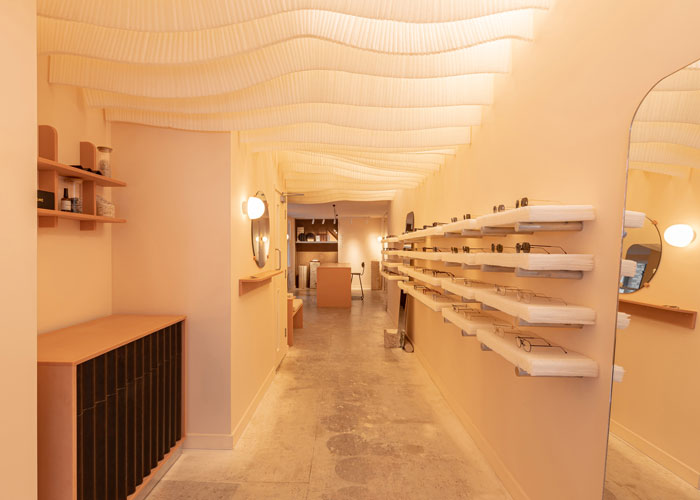
Monc, Nina + Co
Throughout the exhibition stands, which span 3 floors of the hall, guests are invited to take in the latest material launches and discover the hottest innovations in surface solutions. The heartbeat of the show is appropriately placed in the centre of the event, and once again, the Surface Spotlight Live was curated by trend aficionado Sally Angharad. Her selection of ground-breaking materials always offers a hands-on experience of new material formulations, textures and colour-ways, all of which having been conceived, designed and manufactured ethically. Neighbouring this amazing selection of materials was another curated by Color Hive, who utilised their trend story Provenance to highlight a growing interest in localism that is driven by a desire for transparent and sustainable manufacturing.
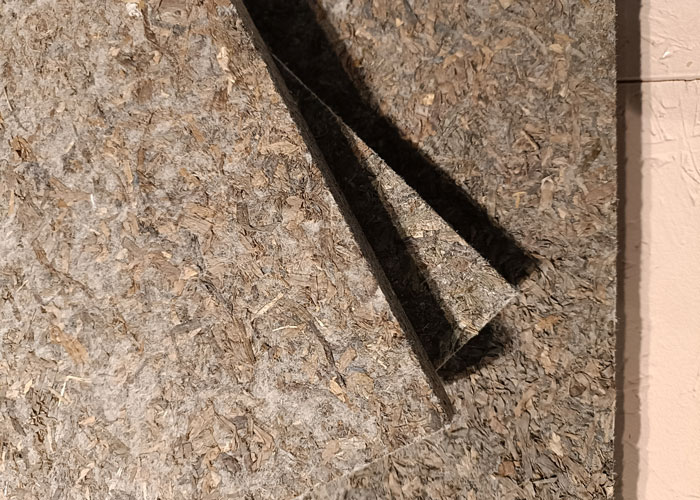
Sould
It was here that a number of interesting bio-based material developments could be found, with a number of designers also turning to vernacular processes and locally sourced ingredients, many of which included ubiquitous waste streams. Danish brand Søuld has turned to organically grown and sustainably obtained eelgrass in the creation of a series of acoustic panels that retain their clearly natural aesthetic appearance. Not only do they offer a viable alternative to artificially manufactured materials such as customary foam but the eelgrass itself is also a CO2-binding substance.
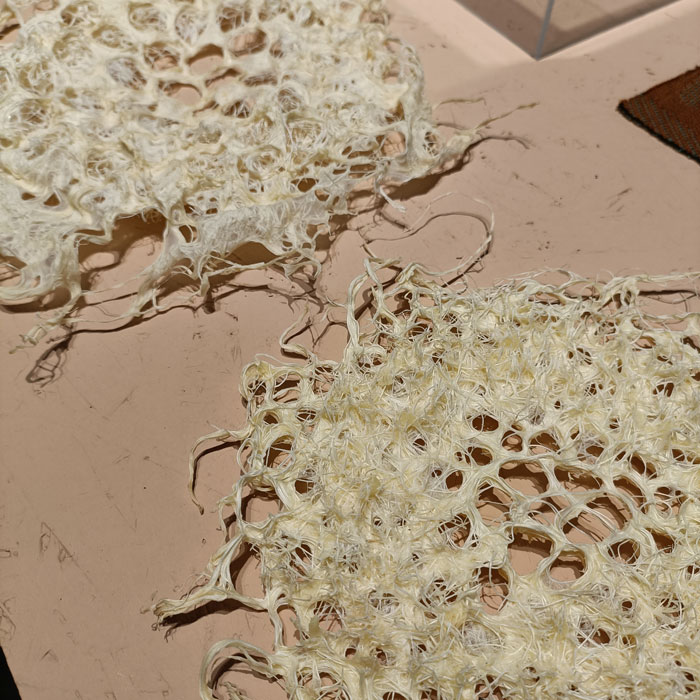
Rootiful
As the title suggests Zena Holloway’s project Rootiful engages the roots of plants, notably wheatgrass, to quite literally grow new surface material. The latticed entanglement of ordinarily subterranean shoots are cultivated to form lace-like structures. Whilst these naturally woven surfaces can be used as an alternative to fabric in the creation of wearable garments, they have also been grown into 3-D forms that can be used in interior contexts, not least as lighting design.
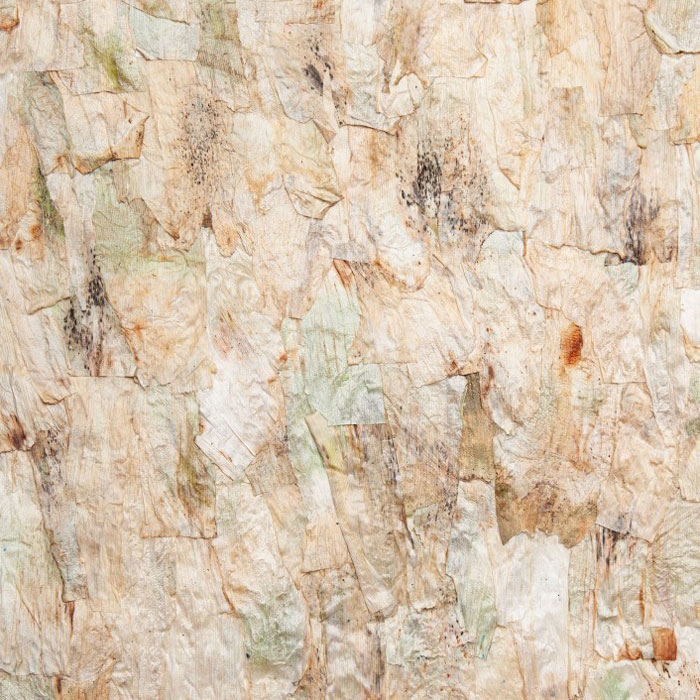
Antonia Claudie
Reusing waste remains a primary focus for a number of exhibitors at the show and first-time exhibitor Antonia Claudie has turned to organic waste to create a textile dye alternative of her own. The food industry offers many potential natural waste streams and whilst much of the bio-based by-products break down through decomposition, transforming them into dyes is still a less resource-intensive process and cleaner than the manufacturing of most industry-standard textile dyes. The Future Fossil Collection takes peace silk through a series of techniques that involves the use of discarded leek peel in combination with rust, the results of which are beautiful fabrics with a natural patina. Each unique piece, which have thus far been turned into wallcoverings and lighting, do not strive for a perfect all-over colour, but instead celebrate the element of chance that the sustainably sourced materials allow.
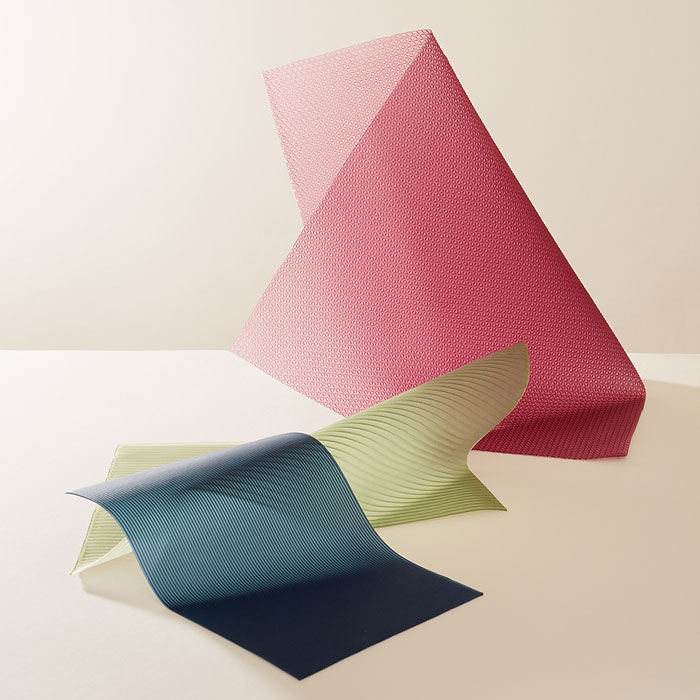
Peelsphere
Bio innovation company Peelsphere operates at the intersection between design, material science and sustainability and as their name suggests food waste is once again at the core of what they do. Working with algae and fruit waste they make alternatives to hide-based leather, which can also be recycled or allowed to bio-degrade at the end of its lifecycle. It’s another fine example of a circular product that greatly reduces environmental impact in its production and afterlife.
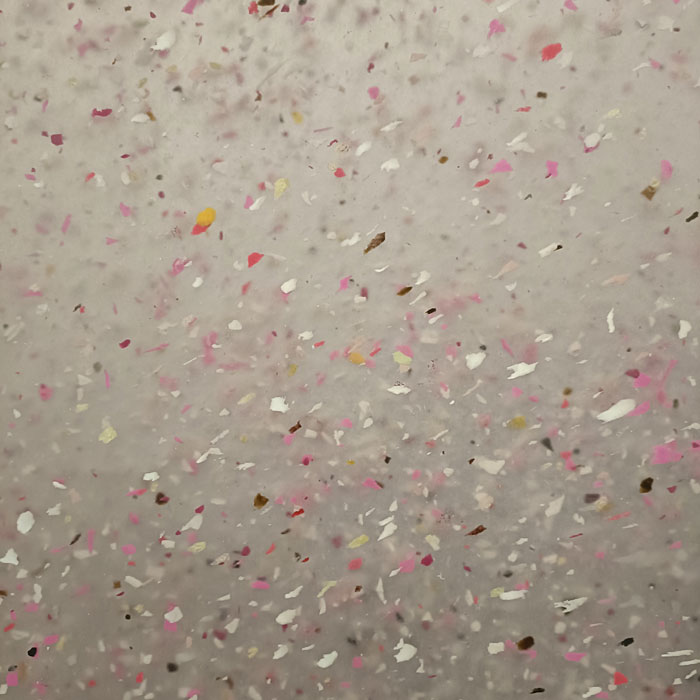
Smile Plastics – Spectra
Another substance that is perhaps as omnipresent as food waste is plastic, and the show is a testament to the growing momentum within the industry to save such leftovers from landfill or incineration and transform it into something useful. Smile Plastics are undeniably the forerunners of this process, having been making recycled plastic sheet material since the 90’s, but they are still innovating and expanding their product offering. As well as showcasing standard ranges such as white-flecked Alba and mottled Orca the team also used the event as an opportunity to launch their new colourways in the translucent range, Spectra. That translucent quality is achieved through the use of clear PET packaging waste, although a customary fleck is present, once again celebrating the (positive) reality of imperfection that recycling in this way creates.
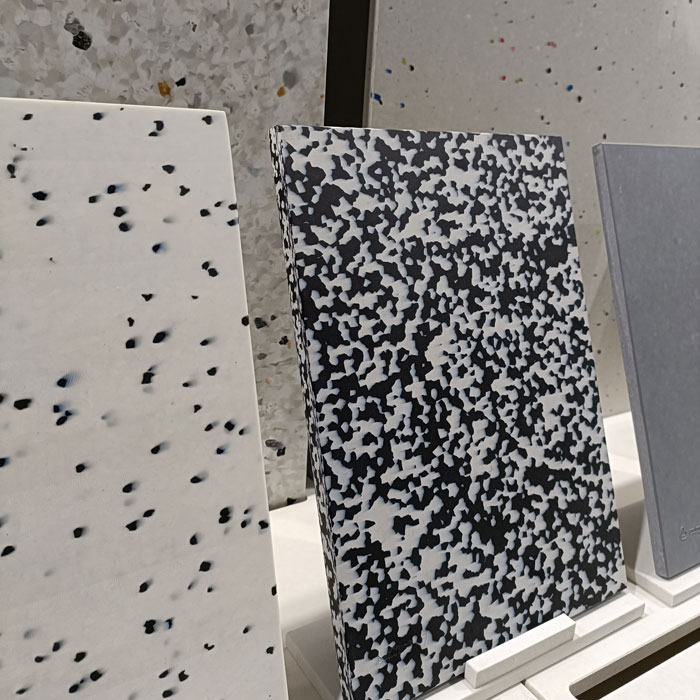
The Good Plastics Company
Joining Smile Plastics at the show and indeed in the recycled plastic sheet market is Dutch brand The Good Plastic Company. Drawing upon a range of post-consumer and post-industrial plastic waste sources, their Polygood panels share a similar make-up and speckled effect, although variations in pattern and colourways make them distinct in their offering. Competition within this particular section of the market can surely only be a good thing for specifiers and indeed in saving on material waste, and of course, with circularity in the mind, each company works with single plastic types with every sheet they make.

Spared®_Plinth_Achromatic-Vessels
As opposed to sticking to flat sheets, UK-based Spared have taken things one step further with their recycled plastic formulations in the creation of 3-dimensional products. This makes sense given that most polymers are thermoformable, but the team have already shown what a little innovation can offer with flowing-formed vessels, large-scale tables with sumptuous colour gradients, and lighting already in the portfolio of developments.
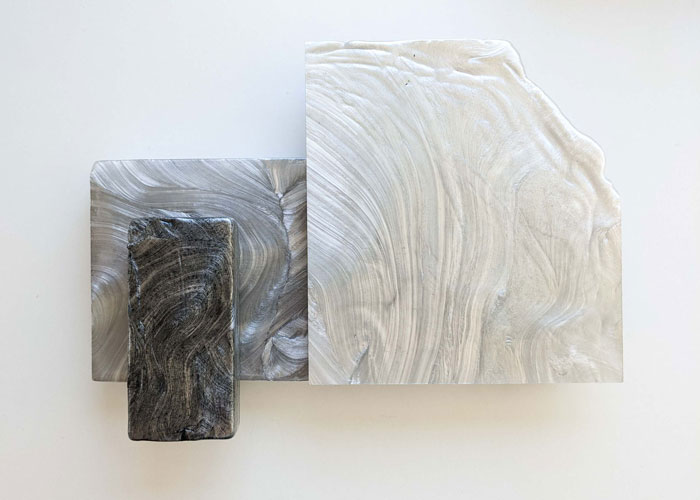
Plasticiet
Another Dutch brand on display at the show was Plasticiet, who are represented by Surface Matter in the UK. As the name suggests, they are another manufacturer keen on elevating the status of plastic waste and they too transform singular materials such as polystyrene in the forming of new panels. The crown jewel of materials on offer at Surface Matter’s stand was the alluring and all-new limited edition Mother of Pearl range. The shimmering surfaces are the result of some experimental research and development using polycarbonate sheets. When heated the material is stretched and twisted like taffy with the resulting marbled products coming in a silver, graphite, or bespoke finish.




